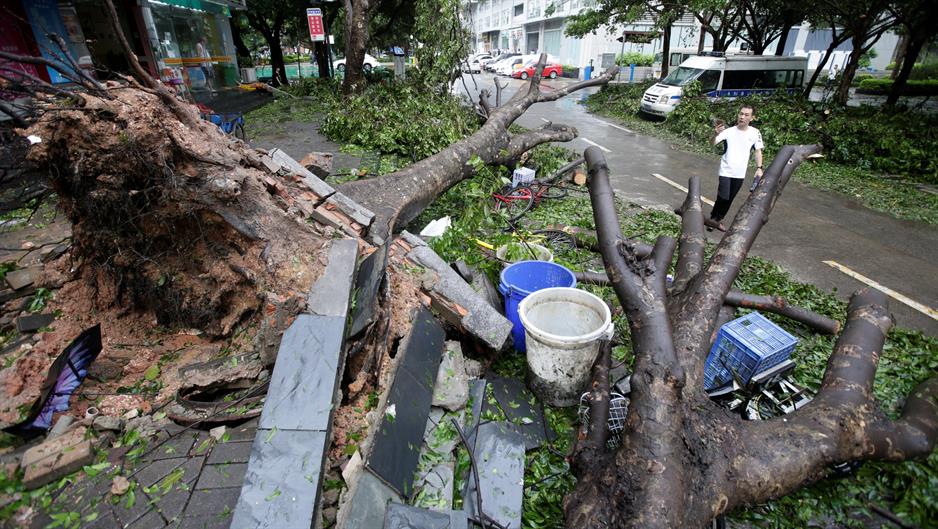
More than three million people have been moved to safety in southern China as Typhoon Mangkhut moved northwards and continued to wreak havoc across the region.
Mangkhut made landfall in Guangdong, China's most populous province, late on Sunday afternoon, killing four people before heading west into neighbouring Guangxi province around midnight.
The decision to evacuate towns and cities in southern China came as Hong Kong was left reeling by ferocious winds of up to 173 kilometres per hour and gusts of up to 223 kph.
The storm tore off roofs and scaffolding from skyscrapers, shattered windows, shook high-rise buildings and caused serious flooding in low-lying areas as waves of more than three meters lashed the coast.
Though Hong Kong managed to avoid the same fate as the Philippines, where at least 54 people are believed to have died in the storm, damage to the city was extensive.
On Monday morning, in the neighbourhood of Heng Fa Chuen, downed trees, some ripped up by their roots, blocked roads and footpaths, while uprooted bricks from the sidewalk lay everywhere.
Residential towers in the neighbourhood were without water and electricity. Four large tanks of clean water had been provided for residents to bring up, but with the elevators out of service they needed to carry them up stairs, as high up as 22 floors above ground level.
As many as 391 people in Hong Kong sought medical attention Sunday during the storm, according to the local city government.
Along the coast, the former Portuguese enclave of Macau, now famous for its casinos, was also shut down as it weathered the onslaught. Last year, 10 people died and more than 200 were injured during Super Typhoon Hato, according to official figures.
This year, authorities there reported 30 cases of damage to buildings or of concrete collapsing. No official casualty count has been released.
Worst hit by far was the Philippines, where at least 54 people were killed when the violent, then-super typhoon – known locally as Ompong – cut a swathe through northern Luzon.
The storm caused flooding and landslides on Luzon, particularly in the town of Itogon, Benguet, where landslides have killed at least 35 and left dozens missing, many of whom are believed to be buried under thick mud.
Search and rescue operations were underway at the site.
The country's president, Rodrigo Duterte, is due to make an official visit to the affected region, state media PNA reported.
He urged rescue and relief teams to ensure that normalcy was restored "as soon as possible," directing an immediate start to rehabilitation and repair projects in the areas hardest hit by the storm.
Follow N1 via mobile apps for Android | iPhone/iPad | Windows| and social media on Twitter | Facebook.
Kakvo je tvoje mišljenje o ovome?
Pridruži se raspravi ili pročitaj komentare



 Srbija
Srbija
 Bosna i Hercegovina
Bosna i Hercegovina
 Slovenija
Slovenija







